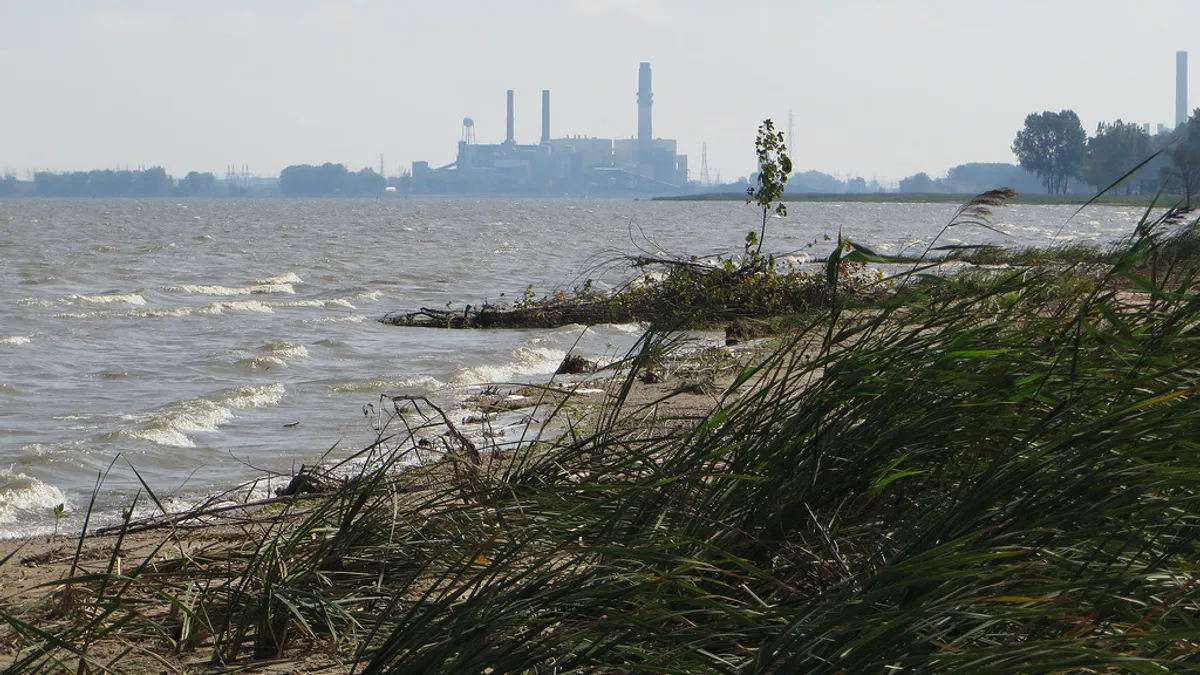Dive Brief:
- Consumers Energy on Wednesday announced a plan to end its use of coal generation by 2025, 15 years ahead of the utility's current schedule. The utility is also shuttering peaker units burning gas and fuel oil.
- If approved by the Michigan Public Service Commission, Consumers would close coal-fired Campbell units 1 and 2 in 2025, six years ahead of current plans. Campbell 3 would also be shuttered in 2025, 15 years ahead of current plans. The units combine for 1,440 MW, according to the utility.
- By 2040, Consumers plans to meet 90% of demand with clean energy resources. The final 10% would be natural gas, generated in part by existing plants the utility is now proposing to purchase.
Dive Insight:
Environmental advocates cheered Consumers' steps to dump coal and add clean resources, but were skeptical of plans to keep leaning on natural gas.
Charlotte Jameson, program director for legislative affairs, drinking water and energy at the Michigan Environmental Council (MEC), called Consumers' announcement "historic and critical," but added, "we are skeptical of the transition to using additional natural gas to fulfill our state's energy needs."
Jameson said MEC and a coalition of groups will be intervening in the case to propose ways for Consumers Energy "to more rapidly transition to fully carbon-free, clean energy."
"On initial review, we're encouraged by Consumers Energy's plans to retire coal by 2025," John Delurey, senior regional director in the Midwest for Vote Solar, part of the coalition that will intervene in the proceeding, said in a statement. "However, the seemingly unnecessary purchase of existing gas plants is concerning."
According to the utility's announcement, the plan "creates price stability and, by using natural gas as a fuel source to generate baseload power, will save customers about $650 million through 2040."
In September, Michigan Gov. Gretchen Whitmer, D, signed an executive order committing the state to going carbon-neutral by 2050. Delurey said meeting that target requires "stronger investments in clean energy, including a hard look at the benefits of increased distributed generation."
A summary of Consumers' plan says by 2040 the utility will meet demand with 63% renewable power, 15% customer efficiency programs, 12% energy storage and 10% natural gas. Today, it delivers almost 60% fossil fuel energy, including from the Campbell coal facility and the Karn peaking facility that burns gas and fuel oil.
Consumers plans to file the full clean energy plan with the PSC on June 30, according to a spokesperson.
Under Consumers' plan, Karn units 3 and 4 would be retired in 2023, about eight years ahead of their design lives. The units can generate more than 1,100 MW combined, the utility said.
The utility is "committed to a just transition away from coal as a fuel source for electricity,” Brandon Hofmeister, senior vice president for governmental, regulatory and public affairs, said in a statement.
Hofmeister said Consumers helped workers find new roles at the company following coal retirements in 2016 and "we plan to follow the same philosophy to help those affected by the proposed Campbell and Karn retirements."
Replacing the retired resources will include construction of nearly 8,000 MW of solar energy, the utility said.
The plan also includes the purchase of four existing gas-fired power plants in Michigan: the Covert Generating Station in Van Buren County; Dearborn Industrial Generation in Wayne County; Kalamazoo River Generating Station in Kalamazoo County; and Livingston Generating Station in Otsego County. Federal and state regulatory approvals will be required for the purchases, Consumers said.
Consumers also plans to build a "smarter grid," according to its plan.
"Energy efficiency, demand response and emerging technologies such as grid modernization and battery storage will help us lower peak customer demand," the plan says. Consumers' energy waste reduction programs have saved customers almost $4 billion since 2009, according to the utility.
Ultimately, Consumers expects its plan will reduce carbon dioxide emissions by more than 63 million tons, and avoid more than 3 billion cubic yards of coal ash waste over the life of the plan.














